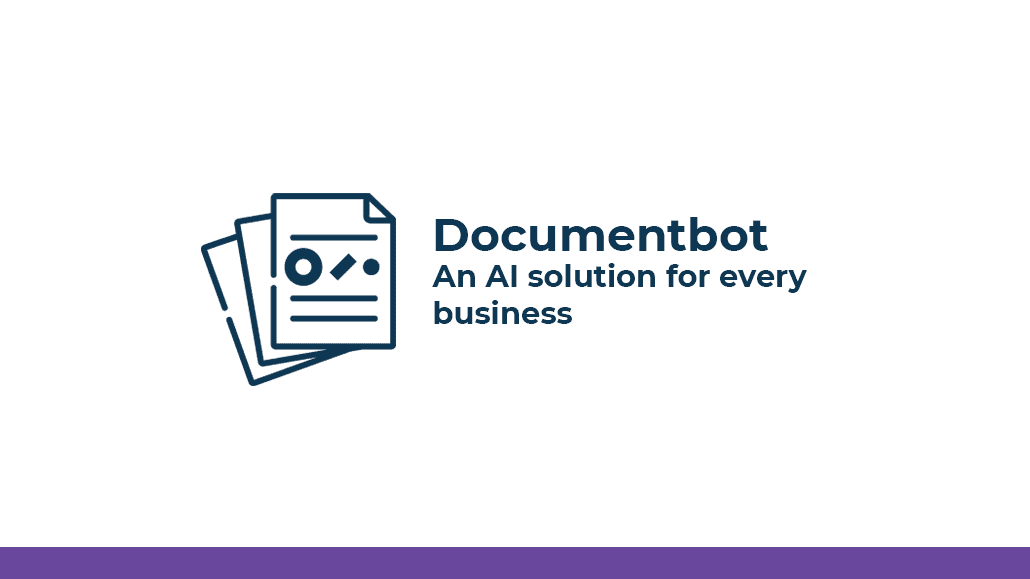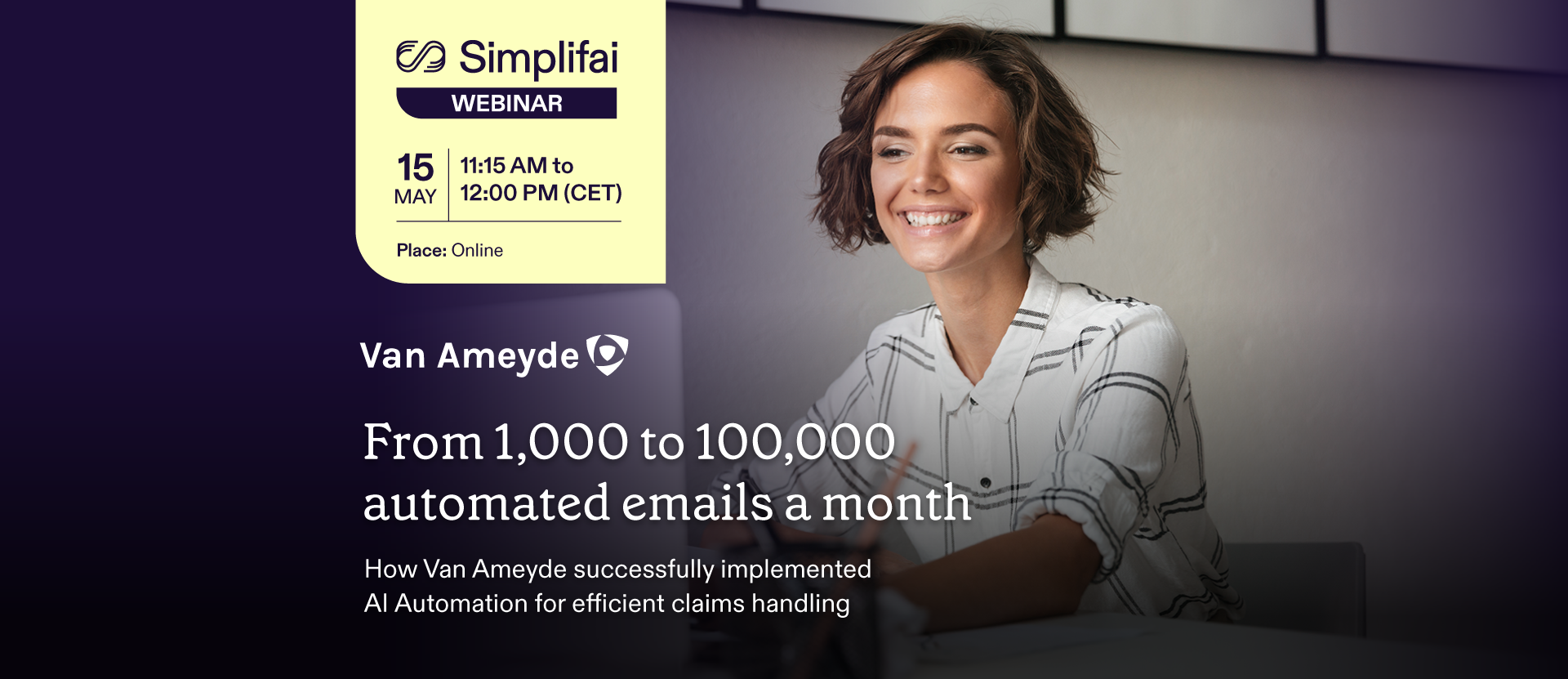The new era of document processing is powered by AI: Documentbot for Businesses

AI-based automation has reinvented the core nature of work processes, further transforming how businesses operate and communicate with each other and their consumers. The advent of AI might not have been sudden, but rather has gradually seeped into different industries, promising immense growth opportunities for organizations.
The application of artificial intelligence need not be only restricted to physical robots and other machines that are enabled to carry out energy-intensive tasks – which ordinarily may require substantial human effort. In contrast, software-based AI solutions flexible enough to be modified based on desired outcomes is a direction that is being targeted by businesses working in the virtual domain.
Why Documents are Here to Stay
One aspect that will always remain common between work processes is the gigantic load of any kind of material exchanged between different organizations and their customers. And it is a bitter truth that no matter the progress achieved in digital mediums and material transferring technologies, data in the form of documents cannot be replaced by a more viable alternative.
Millions of documents are transferred daily across the globe, often comprising one of the largest sources of material that might require constant sorting and data extraction. As an exorbitant amount of time is required to read and interpret data from documents, many businesses are now turning towards AI solutions for the same. However, document reading and data extraction are not the only goals businesses seek when they must deal with a massive load of documents daily.
There are many document management software programs now available that can manage an end-to-end lifecycle of text files, pdfs, images, invoices, receipts, and so on. With most of these software programs working at some level of AI, document process integration with respect to automation is commonly carried out in many organizations. The fact remains that most documents comprise data arranged or compiled in a free-text format, often existing in an unstructured manner. An RPA solution might find it difficult to understand an unstructured form of document as it might be programmed with a rigid set of rules. This sets the premise for using AI solutions such as OCR and NLU for processing documents with ease.
Task Repetitiveness Hampers Time
Most work activities in businesses are governed by a sense of repetitiveness with regular variation in methodologies. Regardless of the complexity of such activities, the core fact remains that such manual repetitiveness does consume time. It would be safe to assume that manual task repetitiveness not only causes delays but also impedes organizational efficiency. A complete solution that implements automation in devices, as well as human actions, might still be years away from now, but advancements in software-based automation using artificial intelligence present a viable way out.
Elaborating more on this dilemma, a solution that can greatly reduce task repetitiveness through human actions is required. With humungous volumes of documents standing as the biggest hurdle against improving work efficiency in companies, it only makes sense to develop a solution that can handle both computer-generated and human-written documents.
The Role Played by AI to Manage Documents with Free-Text
Since the past decade or so, an immense amount of research has been carried out in terms of developing an automation solution that can read and understand different documents. While there are several document-reading programs developed by a few organizations, not all of them are designed to understand free-text language.
In a brief sense, free-text is the representation of electronic data in the form of a text-based language that does not have any constraint or format. Not every AI solution today is trained enough to completely understand free-text data. Free-text usually might be categorized wrongly by such automation solutions, as they are unable to read the particular disposition of every letter. In case a program can read and understand free-text, it is enabled to recognize every letter, number, and text figure as a separate object, which consequently aids in its interpretation.
Documentbot – A New Beginning for AI Document Interpretation
Simplifai is an AI company, and we have developed an elegant solution called Documentbot specifically designed to read, understand, and interpret documents and their data. Our bot can further carry out subsequent actions based on the requirement, such as forwarding interpreted data to respective stakeholders, sending replies to concerned individuals, and archiving documents and similar materials in an archival system. Our solution can also be combined with other modules such as the Emailbot and Chatbo to create a digital assistant capable of handling all kinds of automation tasks in the virtual world.
Our Documentbot created at Simplifai is a powerful solution that acts as a game-changer for document interpretation, especially for businesses that spend multiple hours manually sorting digital documents. This AI solution primarily makes use of Optical Character Recognition (OCR) combined with Natural Language Understanding (NLU). The Documentbot can read and interpret both structured and unstructured data, thereby covering a vast array of document types including invoices, receipts, personal identification, bills, reports, manuals, brochures, and so on.
Document Reading and Interpretation – What is the End Goal?
The key functions of Simplifai’s Documentbot elaborated above comprise its initial actions carried out, but it is necessary to have an end-goal for any kind of document management system. Effective communication with respective stakeholders after any document has been analyzed and interpreted requires a high degree of accuracy, especially when the process itself demands complete automation. The Documentbot is designed to exactly lead towards a final goal, in other words, to become an end-to-end solution.
Companies want something new in their management kit, every time a new product is launched, or any technology witnesses a significant evolutionary change. In this new decade that promises technological marvels, complete AI automation is realistically possible in several fields. Artificial intelligence solutions such as the Documentbot might do much more than reading and interpreting documents. Such solutions can be trained rigorously to understand more complex datasets with minimal structure. Understanding unstructured documents is another prime feature of the Documentbot.
The Way Forward
With its launch and availability through Simplifai Studio, the Documentbot can readily read through both computer-generated and scanned documents for now. But the buck does not stop there as the future holds endless possibilities in this field of AI. At Simplifai, we believe in making everything that is impossible today, a reality tomorrow. Going ahead, processing images, handwritten documents, manuscripts, and even scanned pages, is a dream worthwhile enough to achieve, and as an AI solutions company, we aspire to fulfill this dream.


